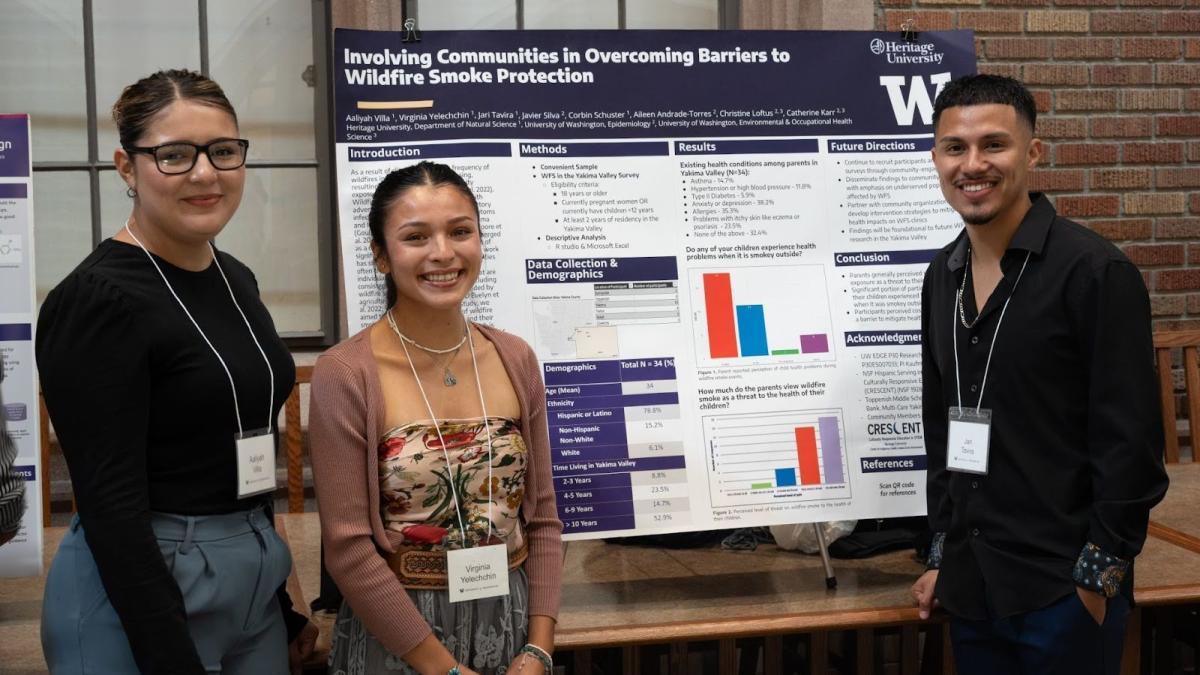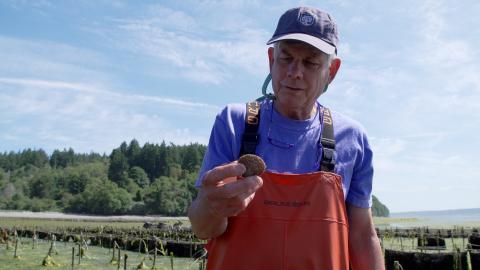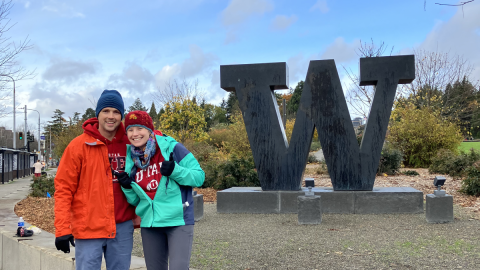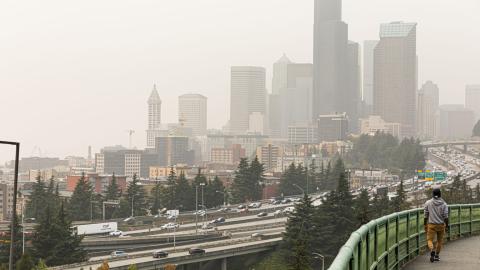Javier Silva was born in Washington state’s Yakima Valley and lived there until accompanying his mom on her forced return to Mexico at age 11. About three years later, he returned to the Yakima Valley and stayed there, going to high school and picking apples and cherries with his dad, until starting college at the UW in 2018. Now a Ph.D. student in the UW Department of Epidemiology, Silva’s ties to the Yakima Valley are strong.
.jpg)
Those ties connected Silva with Christine Loftus, a clinical associate professor, and Dr. Catherine Karr, a professor in the UW Department of Environmental and Occupational Health Sciences (DEOHS). Loftus and Karr had been conducting community-engaged research with families in the Yakima Valley for over 15 years, focusing on issues of air quality and childhood asthma.
In that time, wildfire smoke had become an increasing concern for the region. “Since I came back from Mexico in 2014, it has become common to expect wildfires every year,” said Silva.
Health effects of wildfire smoke exposure
In addition to acute impacts such as exacerbating asthma attacks and chronic obstructive pulmonary disease, exposure to wildfire smoke can have long-term impacts on cardiovascular and respiratory health and even contribute to dementia. Wildfire smoke exposure has also been associated with adverse pregnancy outcomes such as increased preterm births and reduced birthweights.
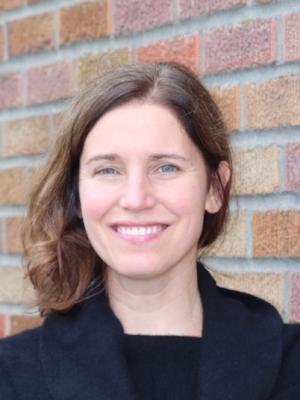
Yakima-area communities are especially vulnerable to smoke not only because their rural region is routinely hard hit by wildfires but also because many immigrant families in the area work outdoors in agriculture, have low incomes and face language barriers. The Yakima Valley also has a high percentage of families with young children and pregnant women — two groups that are particularly vulnerable.
Protecting families
Silva, Loftus and Karr want to design interventions to protect people in the Yakima Valley from wildfire smoke, but first they needed to better understand the experiences of families during dangerous smoke episodes. “This has been an important data gap,” said Loftus.
Her team wants to understand the perspectives of parents of young children in the Yakima Valley — what health effects their families have experienced, their perceptions of risk, their knowledge about wildfire smoke, and their ability to take protective actions.
“One of our main goals was to identify the predictors and barriers to taking protective actions — both for parents protecting themselves and their children,” said Loftus.
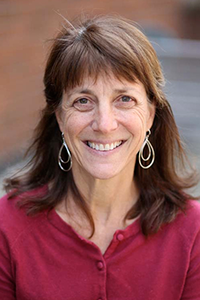
To fill the data gap, Loftus and Karr designed a study aimed at collecting 200 surveys from Yakima Valley community members. With pilot funding from the UW Interdisciplinary Center for Exposures, Diseases, Genomics & Environment (EDGE), they enlisted a team of collaborators who grew up in the Yakima Valley including Silva, Corbin Schuster, an assistant professor of microbiology at Oregon State University, Jessica Black, a professor of environmental science at Heritage University, and Jari Tavira, Virginia Yelechchin and Aaliyah Villa, three undergraduates from Heritage University.
Heritage University is a federally designated Hispanic- and Native-serving educational institution in the Yakima Valley with about 75% first-generation college students. Aileen Andrade-Torres, an MPH student in the UW Department of Epidemiology, also played a key role in the project, including in support of the original proposal.
“Our team was very passionate about wanting to figure out ways that we could promote intervention strategies to help families be safer, especially during those critical moments of wildfire smoke,” said Schuster, an alum of Heritage University and a faculty member there at the project’s outset.
Collecting data
Students spent the summer going to food banks, places where free school lunches were distributed, health fairs and other local events to recruit study participants.
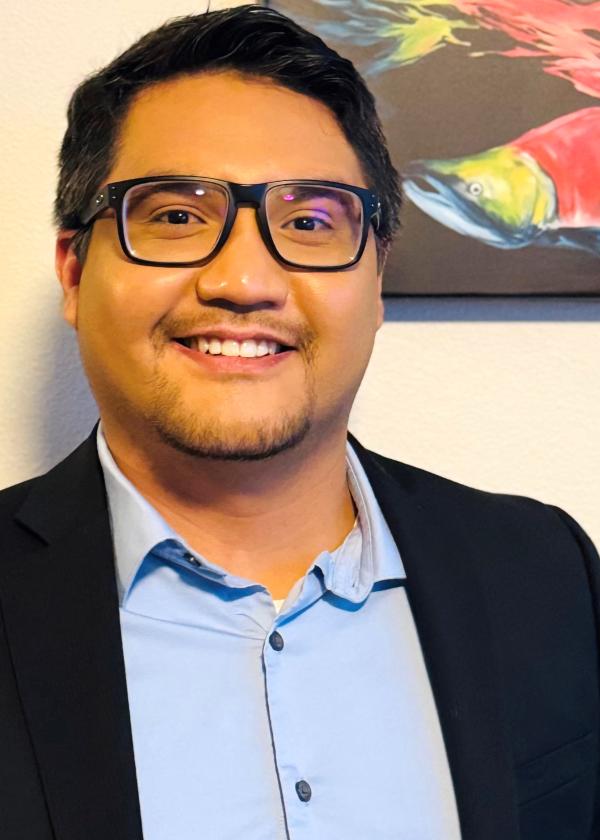
“It was incredible what the students were able to do, in terms of promoting the project with the community and building trust with participants,” said Loftus. They were quickly able to reach their goal of 200 respondents.
“With each member that participated, I would see my mom, my aunt, my family member. It was very gratifying for me,” said Silva.
He and Andrade-Torres worked as program managers for the study, helping with survey design, translating study materials, leading data collection, mentoring the Heritage interns and managing relationships with community leaders.
Project results
Survey results are currently being analyzed and written up for publication, but a few messages have already emerged. For example, people are highly motivated to protect their children. The survey responses indicate that strong community connections play an important role in shaping behaviors.
Parents were more likely to take precautions in smoke events if others in their network were taking action — in fact, it was one of the strongest determinants of self-protective behaviors. In addition, social media may be an even more important source of information than trusted news sources.
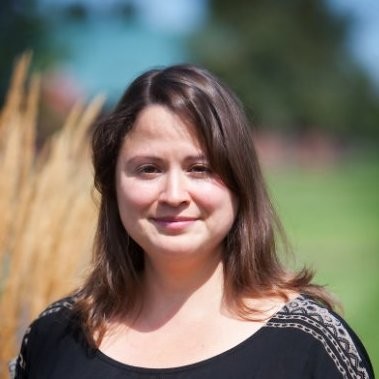
While generating insights to inform future interventions, the project also provided valuable professional development for the student interns who participated in data collection, exposing them to potential careers in public health research.
“They’ve all expressed that they would like to come back and work within the Yakima Valley to improve the health of our communities, and I think that was one of the biggest impacts of participating in this research experience,” said Schuster.
All three undergraduates presented their results at the 2024 UW Summer Undergraduate Research Poster Session in Seattle. In November, Tavira presented project results at the 2024 Annual Biomedical Research Conference for Minoritized Scientists and won a presentation award in the Social and Behavioral Sciences and Public Health category.
The project also yielded a short video about the health effects of wildfire smoke created by Yelechchin and other Heritage University undergrads. It features community members sharing short vignettes about their experience with wildlife smoke and points to instructions for making a low-cost box-fan filter as one possible health-protective intervention.
The team plans to debut the video at a workshop planned for this August at Heritage University. Community members will receive free materials for making their own box-fan filters, and Heritage students will provide instruction in how to build and use them.

Looking forward
Silva emphasizes that communities in the Yakima Valley are resilient. “There’s a term called ‘familismo,’” he explained. “It means if you ever need something you can go back to your family. It’s a network that characterizes this community and their reliance on family. It ties to how resilient they are.”
As for Silva, he is finishing up coursework for his graduate program and thinking about developing a dissertation project focused on wildfire smoke exposure in the Yakima Valley.
“I loved being part of this project,” he said, “because it was structured to allow us to meet the community where they were — it took a community-based approach to research.” That’s something he’d like to continue.
For more information, contact Javier Silva at jasilvah@uw.edu or Christine Loftus at cloftus@uw.edu.
